Returning to running (part 2)
Step 1:
The core is our midsection that acts as a canister and is made up of the diaphragm, pelvic floor, abdominal muscles and spine muscles. Think of the analogy of a coke can. The diaphragm descends with inhalation and rises with exhalation. When the top moves down, the pressure rises in the middle, and in our bodies, the pressure moves into the pelvic floor allowing the muscles to elongate down a little bit. When we squeeze in at the belly muscles, the pressure can go up, down or both depending on what the muscles do in response..
What does that mean?
During pregnancy, the the baby presses up our organs in the rib cage and prevents our diaphragm from being able to fully depress or move downward to suck in more oxygen/air. The baby also presses out and down on the pelvic floor that can lead to leaking and other issues. I have found that some mama’s have a hard time after delivery to perform deep breathing and reconnect. This can be because the diaphragm has not moved well for the past several months, it can be due to stiffness in the ribs and spine (at the attachments of the diaphragm) from being pressed on by the baby or because there are restrictions in the obliques, rectus, and other abdominal connections from baby’s positioning in the region for the past several months.
Why is deep breathing so important?
When the diaphragm moves downward, the abdominal contents slide and glide on each other, the belly muscles relax and the pelvic floor muscles actually drop down just a little bit in an elongation of the muscles as mentioned above (watch video above). It is well known that deep breathing is utilized for decreasing stress, improving heart rate, improving blood pressure, improving digestion, improving pain perception, improving spine and rib mobility, and most of all keeping us alive!
This is the first place we start when addressing core stability and control…it’s never to early (or late) to start breathing and being able to connect the pelvic floor with breath-work. Be watchful if you are breathing with your neck muscles (also known as our accessory respiratory muscles). This tends to create tight necks, jaws, headaches, and upper ribs.
Think about how many times a day we breathe!
What if this was affecting your rehab and healing without you even thinking about it and because you were able to correct the breathing muscle pattern you were “rehabbing” your core several times a minute?
Holding the breath during certain motions and lifts can create issues as well. Be watchful if you tend to hold your breath as you lift the groceries, kids, or even with light items. This places increased pressure through the system and extra pressure on the pelvic floor which may lead to other issues.
What to do? Box breathing
Find a place where you can relax. Lying or sitting is fine. Place your hands around your lower ribcage - inhale. Exhale.
What do you feel?
Where do you move?
How hard is it for you to do?
Do you have to think about it?
Can you exhale slowly?
Can you hold between inhale and exhale or do you feel panicky like you need to get that breath quickly?
Can you feel your ribs move into your hands?
Does your chest rise?
Where is the first movement you feel?
These are all questions we want to think about.
When you breathe in, you want to think about belly, rib, spine and diaphragm all expanding. Not just belly. Not upper chest. Practice a few rounds. Count to 5 seconds on the inhale. HOLD for 5 seconds (this is hard for a lot of people and can be scary or cause anxiety so shorten to 2 seconds if needed). Exhale for 5 seconds. And pause again for 5 seconds. Repeat this at least 2-5 minutes.
You should feel your whole body move up and down, not just your belly. If you need help, ask a Womens Health Physical Therapist or another trained professional if you are doing it correctly.
When this is no longer difficult or you have no trouble, work on lengthening the exhale and add a little pelvic floor and core contraction with it.
You can also use this method for picking up heavy objects (car seats or toddlers) by exhaling and engaging those muscles to help set up a strong core base for the lift and movement.

